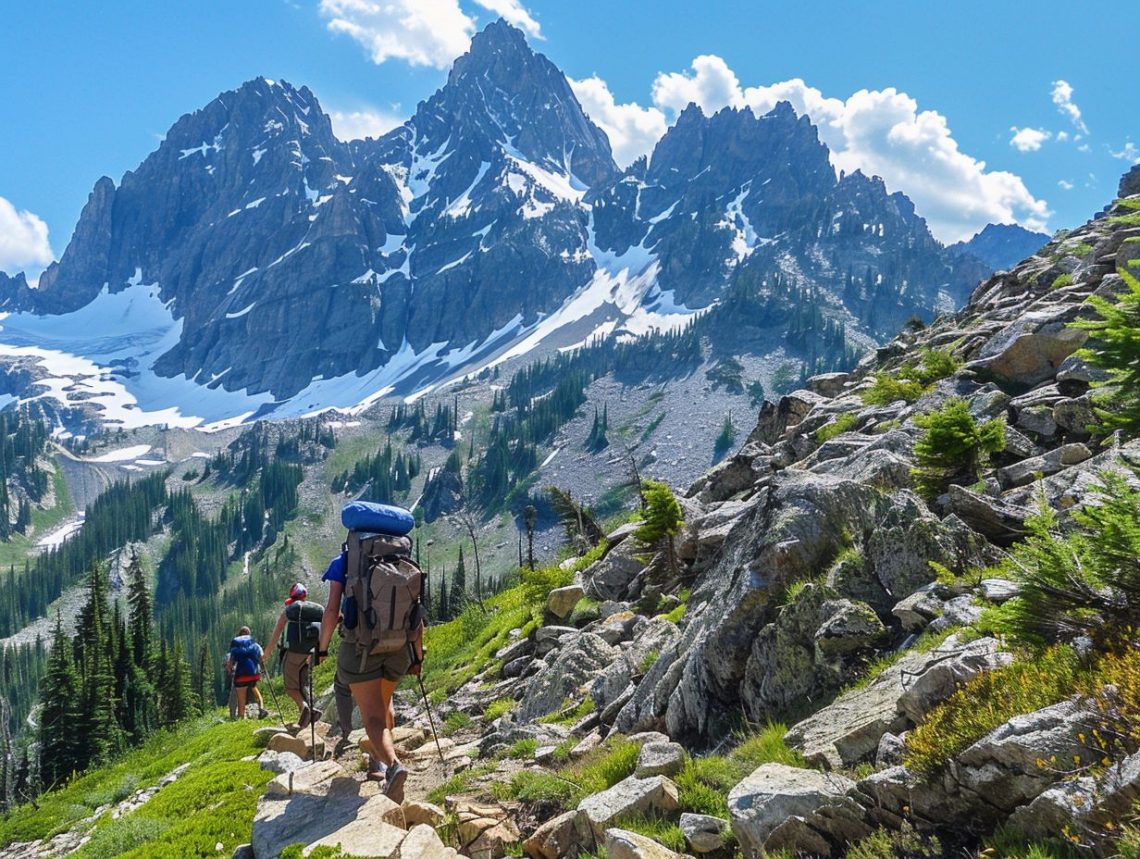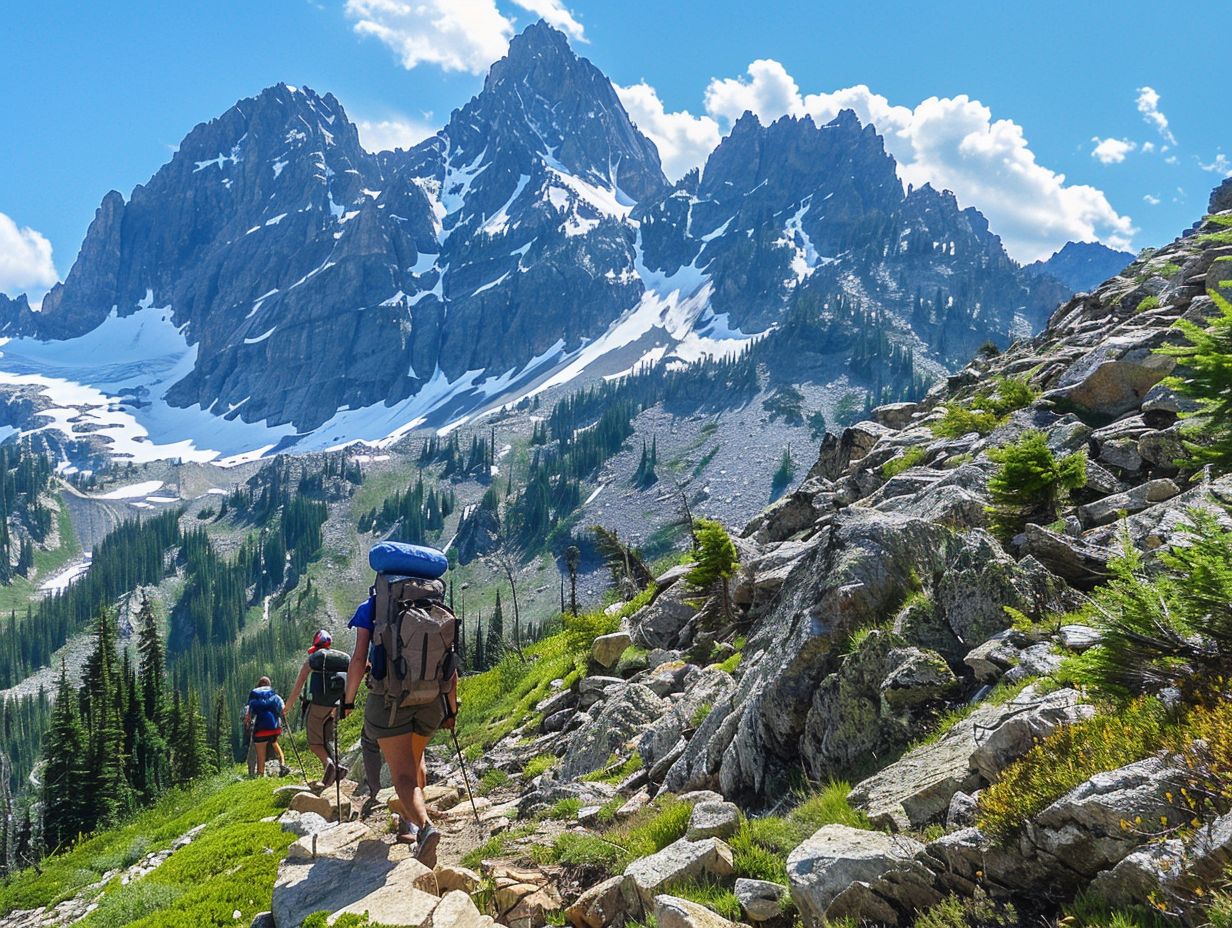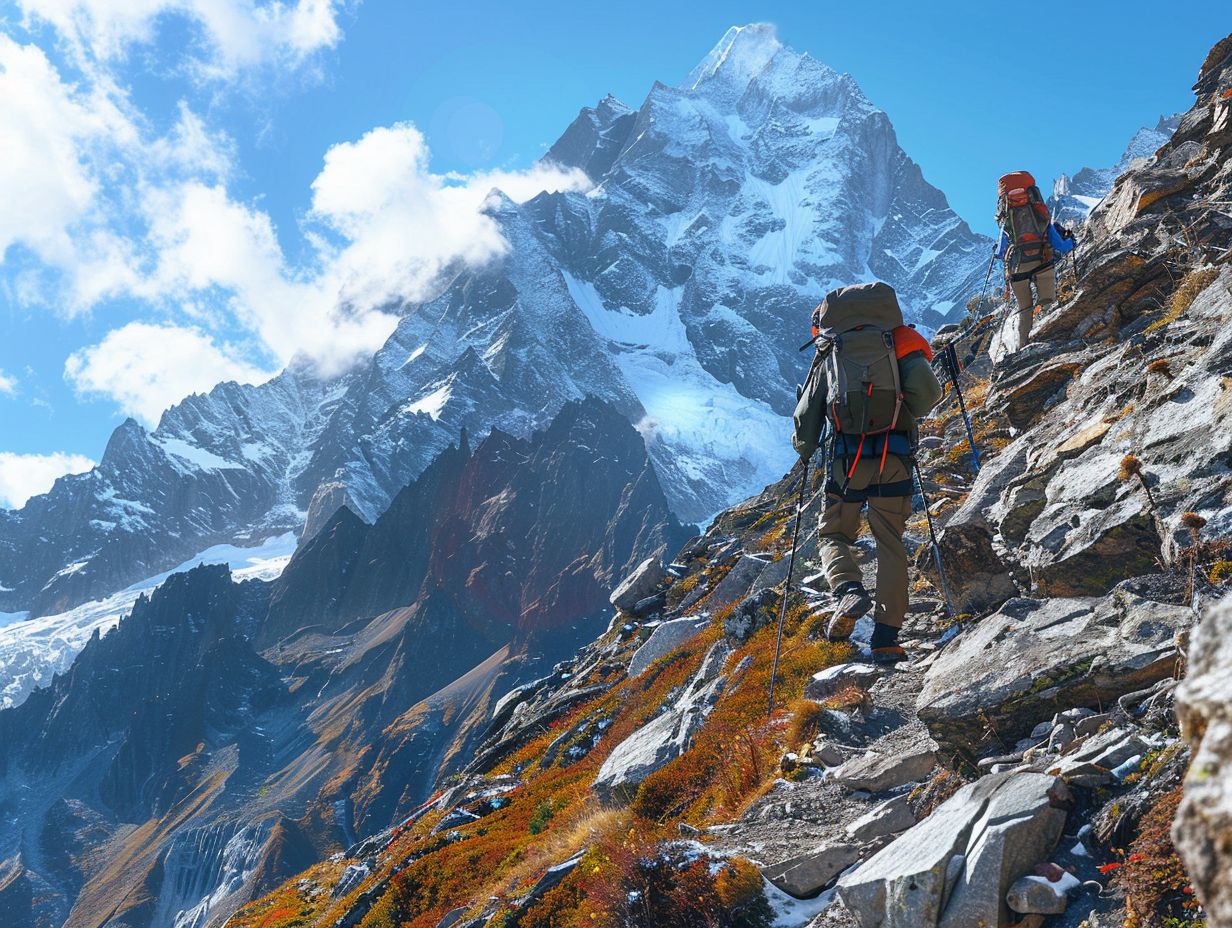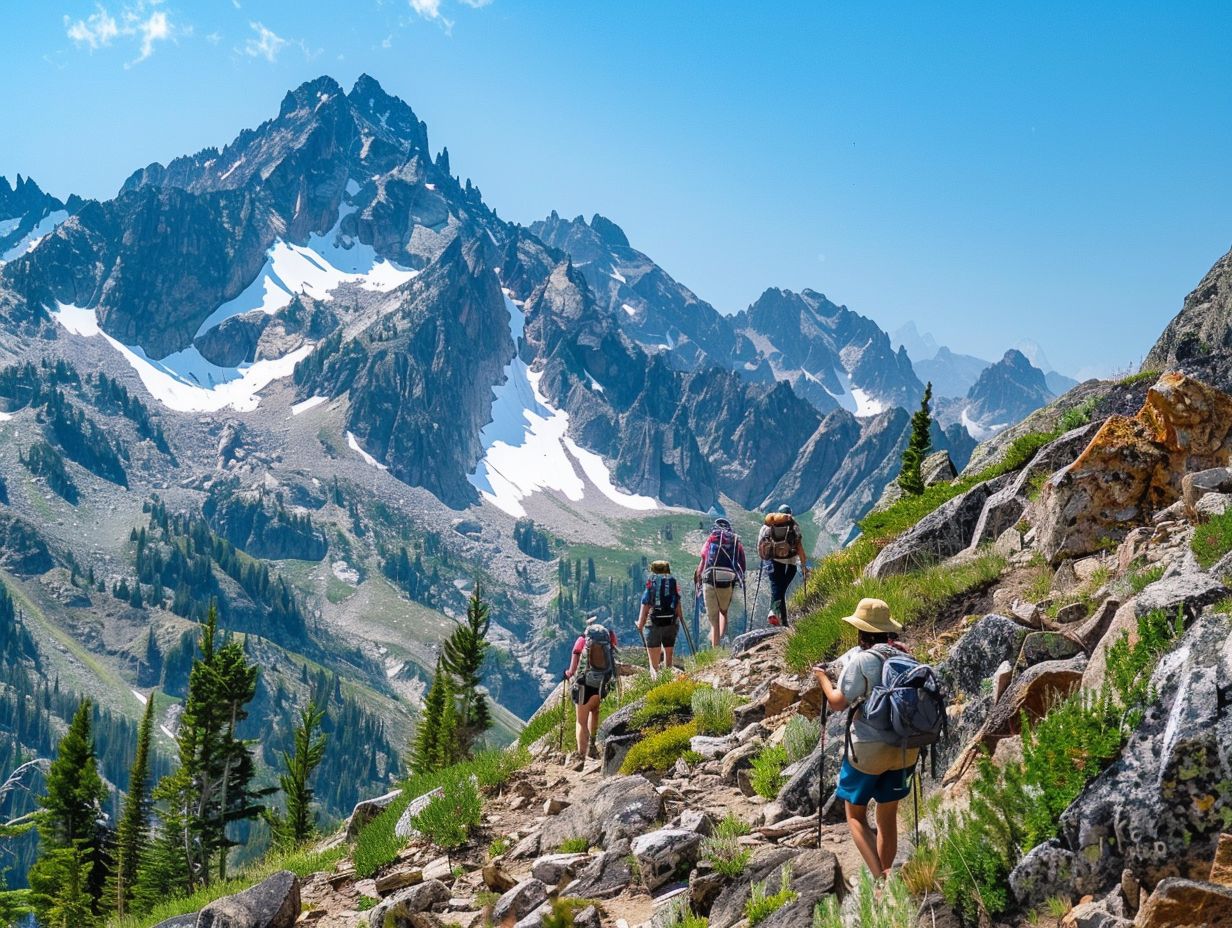
Kilimanjaro Altitude Training
Planning to climb Kilimanjaro and wondering how to prepare for the high altitudes?
Altitude training is a crucial component of preparing for such a challenging trek.
We explore the importance of altitude training, the benefits it offers, and how it can help you acclimatize to the high altitude of Kilimanjaro.
We also discuss the different types of altitude training, recommended altitudes for training, essential equipment, dos and don’ts, common mistakes to avoid, and how to stay safe during your training.
Whether you are a seasoned climber or a beginner, this article will provide you with valuable insights on how to train effectively for your Kilimanjaro expedition.
Key Takeaways:

- Altitude training is important for climbing Kilimanjaro as it prepares the body for the high altitude and helps reduce the risk of altitude sickness.
- The recommended altitude for training is 2,000-3,000 meters above sea level and it is important to avoid training at extremely high altitudes to reduce the risk of altitude sickness.
- Incorporating altitude training into your workout routine, using proper equipment, and avoiding common mistakes can help make your Kilimanjaro climb safer and more successful.
Why is Altitude Training Important for Climbing Kilimanjaro?
Altitude Training is crucial as it helps the body adapt to reduced oxygen levels at high altitudes, reducing the risk of altitude sickness.
When ascending Kilimanjaro, climbers are faced with the challenge of rapidly increasing altitude that can cause various symptoms of altitude sickness.
Altitude training involves simulated altitude exposure or performing physical activities at higher elevations to stimulate physiological adaptations.
This training is essential for climbers, as proper acclimatization can make a significant difference in their overall climb experience and success rate.
Many experienced climbers swear by incorporating altitude training into their preparation regimen.
What are the Benefits of Altitude Training?
Altitude training offers numerous benefits such as improved aerobic fitness, enhanced acclimatization, and increased strength due to the body’s adaptation to lower oxygen levels.
Engaging in altitude training exposes the body to reduced oxygen levels, which stimulates the production of red blood cells, leading to a more efficient oxygen delivery system.
This adaptation enhances overall cardiovascular endurance and respiratory capacity, thereby improving aerobic fitness levels significantly.
The higher altitude conditions force the body to work harder during workouts, contributing to increased muscle strength and power development.
How Does Altitude Training Prepare You for Kilimanjaro?
Altitude training readies individuals for the challenges of Kilimanjaro by enhancing their oxygen utilization, strengthening muscles, and improving endurance.
One of the key benefits of altitude training is the improvement in red blood cell production, which is crucial for carrying oxygen efficiently at higher elevations.
This physiological adaptation helps climbers combat the decreased oxygen levels they will encounter, ensuring better performance throughout the ascent.
Altitude training aids in boosting overall muscle strength, particularly in the legs and core, which are essential for navigating the steep terrain of Kilimanjaro.
What is the Best Way to Train for Kilimanjaro Altitude?

The optimal approach to training for Kilimanjaro altitude involves a well-structured fitness plan that combines aerobic conditioning, strength training, and simulated altitude.
Aerobic conditioning is key to building endurance and cardiovascular fitness essential for withstanding the challenges of high-altitude trekking.
Incorporating activities such as running, cycling, and swimming can improve your oxygen uptake efficiency.
On the other hand, focusing on strength training can enhance muscle strength and joint stability, crucial for carrying heavy backpacks.
Simulated altitude sessions, whether through altitude tents or training at high altitudes, are vital to acclimatize the body to reduced oxygen levels.
What are the Different Types of Altitude Training?
Altitude training encompasses various methods like hypoxic training, altitude tents, and altitude chambers, all designed to simulate high-altitude conditions for effective physiological adaptation.
- Hypoxic training, also known as altitude training, involves working out in a low-oxygen environment to push the body to adapt and enhance its oxygen utilization efficiency.
- Altitude tents are portable devices that create a reduced oxygen environment around an individual, allowing them to sleep and rest in simulated high-altitude conditions, thereby aiding in acclimatization.
- Altitude chambers, on the other hand, are large enclosures that can replicate high-altitude settings with controlled oxygen levels, typically used by athletes and mountaineers to train their bodies for improved performance at altitude.
How to Incorporate Altitude Training into Your Workout Routine?
Integrating altitude training into your workout routine involves incorporating gym sessions, outdoor physical activities, proper hydration, and nutrition to support the body’s adaptation to high-altitude conditions.
What is the Recommended Altitude for Training?
The recommended altitude for training to prepare for Kilimanjaro typically involves simulating elevations between 8,000 to 12,000 feet.
Training at altitudes between 8,000 to 12,000 feet offers various advantages for individuals gearing up for Kilimanjaro.
Such altitudes help the body adjust to lower oxygen levels, thereby enhancing red blood cell production and improving oxygen utilization efficiency.
Training at these heights aids in building cardiovascular endurance and mental fortitude, both essential for coping with the physical and psychological demands of the climb.
How High Should You Train to Prepare for Kilimanjaro?
Training for Kilimanjaro should involve altitude sessions at heights ranging from 9,000 to 15,000 feet, interspersed with rest days and proper hydration.
These altitudes are ideal for climbers to gradually acclimatize to higher elevations and reduce the risk of altitude sickness.
Incorporating rest days allows the body to recover and adapt to the reduced oxygen levels, while proper hydration aids in maintaining optimal bodily functions.
By following this structured training regimen, climbers can significantly enhance their chances of reaching the summit of Kilimanjaro with minimal health complications.
What are the Risks of Training at High Altitudes?

Training at high altitudes poses risks such as reduced oxygen levels, increased fatigue, and susceptibility to Acute Mountain Sickness (AMS).
When individuals train at high altitudes with lower oxygen levels, their bodies have to work harder, causing increased fatigue and decreased performance capabilities.
This combination of reduced oxygen supply and physical exertion can lead to symptoms of AMS, including headaches, nausea, and dizziness.
Without proper precautions and acclimatization, athletes may be putting themselves at increased risk of severe health complications.
It is crucial to recognize the signs of AMS and adjust training intensity accordingly to prevent further escalation of these risks.
What are the Essential Equipment for Altitude Training?
Essential equipment for altitude training includes oxygen regulators, altitude tents, breathable masks, and specialized gear to simulate high-altitude conditions.
To further enhance the training experience, it is essential to have a pulse oximeter to monitor oxygen saturation levels, a hydration pack to stay properly hydrated at high altitudes, and specialized footwear with good grip to navigate challenging terrains without slipping.
Investing in a fitness tracker can help track vital metrics like heart rate, steps taken, and altitude levels climbed during training sessions.
How Long Should You Train for Kilimanjaro Altitude?
Training duration for Kilimanjaro altitude largely depends on individual fitness levels and readiness, with most training plans spanning several weeks to months.
It is advisable to start training at least 6 to 12 months before attempting to summit Mount Kilimanjaro.
This extended period allows for gradual progression, building endurance, strength, and acclimatization to high altitudes.
A structured training program often includes a mix of cardiovascular exercises, strength training, hikes on challenging terrains, and altitude simulation techniques.
Regularly assessing progress and adjusting the training intensity based on individual adaptations is also vital for a successful climb.
What are the Dos and Don’ts of Kilimanjaro Altitude Training?
When engaging in Kilimanjaro altitude training, it is essential to follow guidelines such as gradual acclimatization, proper hydration, and adequate rest while avoiding common mistakes like overexertion and inadequate preparation.
- Do acclimatize gradually by ascending slowly and incorporating rest days.
- Don’t underestimate the effects of altitude; be prepared for changes in weather and conditions.
- Do listen to your body and recognize signs of altitude sickness.
What are the Common Mistakes to Avoid during Altitude Training?
During altitude training, common mistakes to avoid include insufficient time to acclimatize, rapid ascent rates, inadequate hydration, and pushing for the summit at the expense of safety and health.
It is vital to take proper precautions when training at altitude. One grave error many make is underestimating the time needed for the body to adjust to lower oxygen levels.
Climbers often fall into the trap of ascending too quickly, leading to altitude sickness due to the body not having ample time to cope with the atmospheric changes.
Hydration is also frequently overlooked, yet it is crucial to stay properly hydrated at all times to combat the effects of the high altitude.
How to Stay Safe During Kilimanjaro Altitude Training?

Ensuring safety during Kilimanjaro altitude training involves following expert guides, monitoring for sickness, maintaining hydration, and prioritizing health.
When preparing for altitude training on Kilimanjaro, it is crucial to acclimatize gradually, with gradual ascent to help your body adjust to the changing altitude levels.
Expert guidance on the pace of the climb plays a key role in reducing the risk of altitude sickness.
Being aware of symptoms like headaches, dizziness, nausea, and fatigue is essential, allowing for timely intervention if these signs are observed.
Hydration is paramount, ensuring you drink plenty of water to prevent dehydration, which can exacerbate altitude-related health issues.
Remember, your health should always take precedence over reaching the summit.
Frequently Asked Questions
1. What is Kilimanjaro Altitude Training?
A: Kilimanjaro Altitude Training is a type of physical training that involves exercising at high altitudes to prepare for climbing Mount Kilimanjaro, the highest mountain in Africa. This type of training helps the body acclimate to the decreased oxygen levels and challenging conditions that climbers will face during the climb.
2. Who can benefit from Kilimanjaro Altitude Training?
A: Kilimanjaro Altitude Training can benefit anyone who is planning to climb Mount Kilimanjaro. It is particularly helpful for individuals who live at lower altitudes and may not be accustomed to the high altitude and low oxygen levels found on the mountain.
3. What are the benefits of Kilimanjaro Altitude Training?
A: In addition to helping the body acclimate to high altitudes, Kilimanjaro Altitude Training can improve physical endurance, cardiovascular health, and mental resilience. It can also help prevent altitude sickness, which can be a serious and potentially life-threatening condition for climbers on Mount Kilimanjaro.
4. How long does Kilimanjaro Altitude Training typically last?
A: The duration of Kilimanjaro Altitude Training can vary depending on a person’s individual fitness level and goals. However, it is generally recommended to start training at least 6-8 weeks before the climb and to train 3-4 times a week for 1-2 hours each session.
5. Are there any risks or precautions to take during Kilimanjaro Altitude Training?
A: Kilimanjaro Altitude Training can be physically demanding and may put strain on the body, so it is important to consult with a doctor before starting a training program. It is also important to listen to your body and take breaks when needed, as well as stay hydrated and fuel your body with proper nutrition.
6. Can Kilimanjaro Altitude Training guarantee a successful climb?
A: No, Kilimanjaro Altitude Training cannot guarantee a successful climb. It can greatly improve your physical and mental preparedness for the climb, but success also depends on factors such as weather conditions, group dynamics, and personal determination. It is important to have realistic expectations and prioritize safety during the climb.